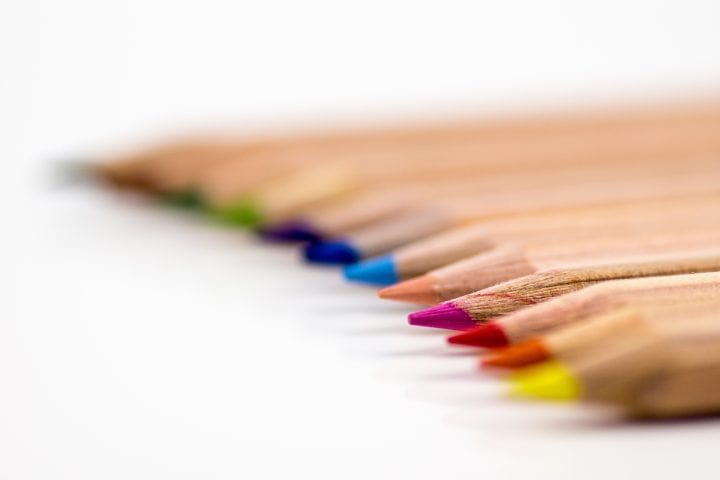
WITS Voices: Rainbow, Rainbow, Rainbow!
November 30, 2015
By Emily Bedard, WITS Writer-in-Residence
On a recent day when the trees flashed a hundred hues against a cloudy Seattle sky, I entered a fourth grade WITS class, planning to play with color.
We began by reading Red Sings from Treetops by Joyce Sidman and Pamela Zagarenski, with its saturated, leaping language and its intricate, dreamlike illustrations. Then, we looked at paint chips and talked about their lively, juicy, sometimes silly names, like Baby Seal and Nacho Cheese. Thanks go to fellow WITS instructors Sierra Nelson and Kathleen Flenniken for these rich activity ideas.
Next, we talked about synesthesia, the deliberate blending of the senses in writing, and I asked each child to pick a color to write about. We brainstormed a bit, read some examples of color-filled poems, and went for it.
The lesson was a combination of new moves on my part, but I had high hopes for the work it might inspire. The kids that day blew way past what I was aiming for. When I moved around the room, reading over shoulders, the poems were leaping from the page. They crackled and sang and wafted and bounced. The words poured down the paper. More children ended up spilling over onto the back side of their drafting pages than in any of the weeks before.
The writing assignment was simple, really, but the children, of course, are not. And so the lines they wrote ranged rambunctiously in their moods and imagery. For Sophie, “gold is the flip of a page…the thump of a heartbeat,” but for Aidan, “gold is the bing-bing of the bell.” For Talia, “green skips across the forest” and “sings a lullaby to the wildfire,” while for Beldon green is “the taste of a fresh pear” and “the waving of seaweed.”
Color was suddenly everywhere that day, filling the heads hovering over the desks, filtering out into the air around them. We were acting out the Elizabeth Bishop line from “The Fish,” writing “until everything/was rainbow, rainbow, rainbow!”
The poems were infused with feeling and nuance, too. I was reading buckets of lines like these:
When I walk past red
I feel the wind whistling
behind me like a breeze of anger.
–Owen
Or these:
Orange is the sound of a siren.
Orange is the crunching
of a vegetable. Orange is
the color of fall ripening.
–Nina
Or, amazingly, these:
Black is what’s behind stars,
the color of holes. Black is what
courses through the veins
of dead trees and old shadows.
Black is the sound of silence.
–Tosha
As I glanced around the room at all the focused faces and busy pencils, I noticed the mood meter on the classroom wall. A staple in Seattle schools, the bright-colored square with its four quadrants of red, yellow, blue, and green is a way for kids to gauge their energy and happiness levels. It’s an incredibly useful teaching tool, and it occurred to me that perhaps it was the students’ experiences with using the mood meter that helped them write such amazing lines about color.
But then, I looked at the students again, and I thought that, while the mood meter is a terrific instrument in the classroom, there is no way it could account for everything happening around me. Pablo Picasso famously said, “All children are artists,” and the writing that day proved the old master right, again. I left the class with a stack of poems suggesting that children see more vividly and more purely because they are not yet bound to the lockstep of logic and the fear of self-contradiction. The reason the writing was so strong was its innate childness. No grownup is ever going to write “ultraviolet smells like all the desserts combined,” but a 4th-grader named Max did, and I’m not going to argue with him.
Emily Bedard writes poetry, fiction, and collaborative screenplays with her sister. She has an M.F.A. from the University of Montana and has taught students from preschool to college age. Her freelance work is in print and online, and her poems have appeared in Indiana Review, Swivel, and elsewhere.
WITS Voices features posts by SAL’s WITS Writers-in-Residence, our core of professional, local writers, who share their experiences working with K-12 students. Through our Writers in the Schools Program, WITS Writers teach creative writing in public school classrooms throughout the Seattle, Highline, Port Townsend and Shoreline Districts, as well as at Seattle Children’s Hospital.